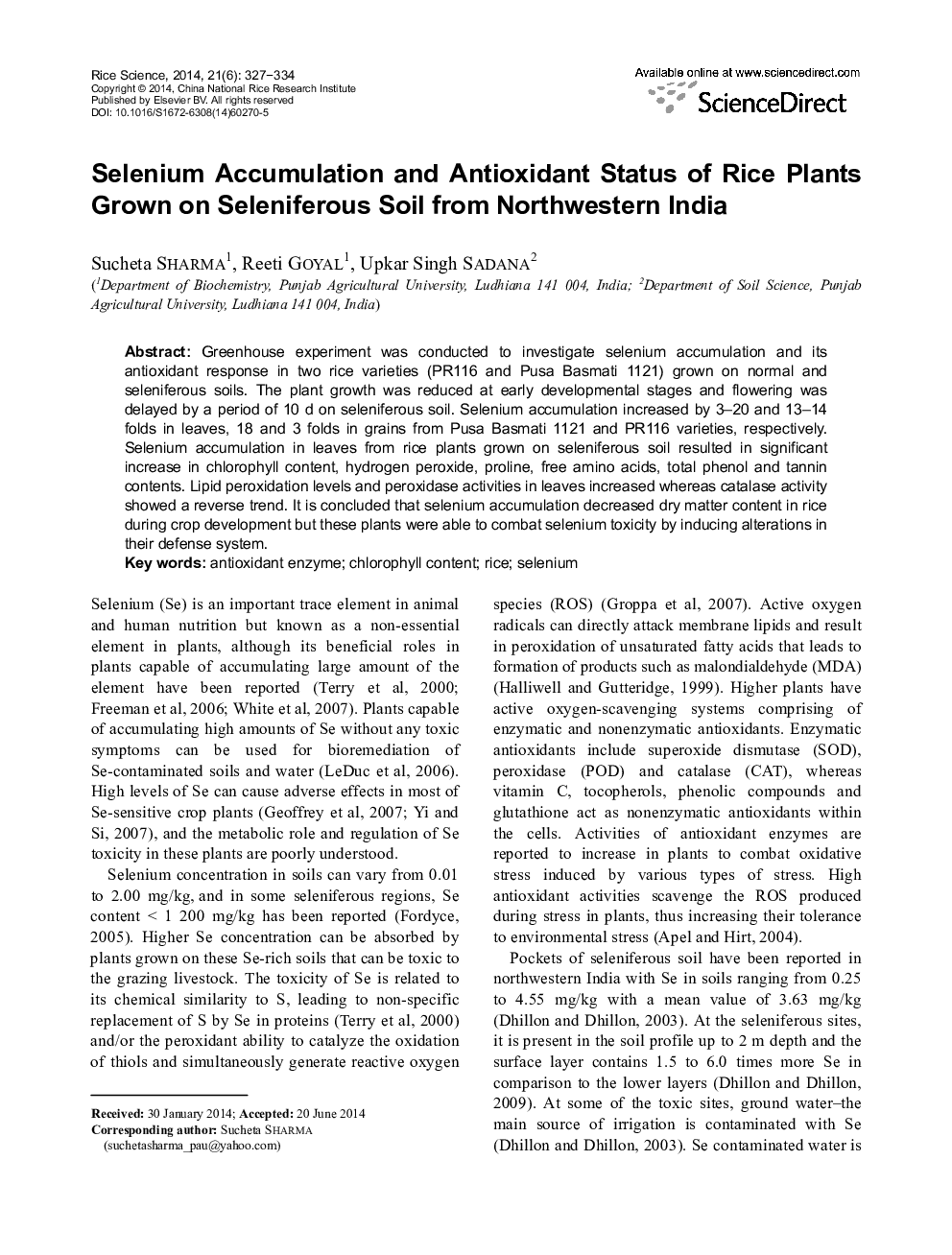| Article ID | Journal | Published Year | Pages | File Type |
|---|---|---|---|---|
| 4501820 | Rice Science | 2014 | 8 Pages |
Greenhouse experiment was conducted to investigate selenium accumulation and its antioxidant response in two rice varieties (PR116 and Pusa Basmati 1121) grown on normal and seleniferous soils. The plant growth was reduced at early developmental stages and flowering was delayed by a period of 10 d on seleniferous soil. Selenium accumulation increased by 3–20 and 13–14 folds in leaves, 18 and 3 folds in grains from Pusa Basmati 1121 and PR116 varieties, respectively. Selenium accumulation in leaves from rice plants grown on seleniferous soil resulted in significant increase in chlorophyll content, hydrogen peroxide, proline, free amino acids, total phenol and tannin contents. Lipid peroxidation levels and peroxidase activities in leaves increased whereas catalase activity showed a reverse trend. It is concluded that selenium accumulation decreased dry matter content in rice during crop development but these plants were able to combat selenium toxicity by inducing alterations in their defense system.
